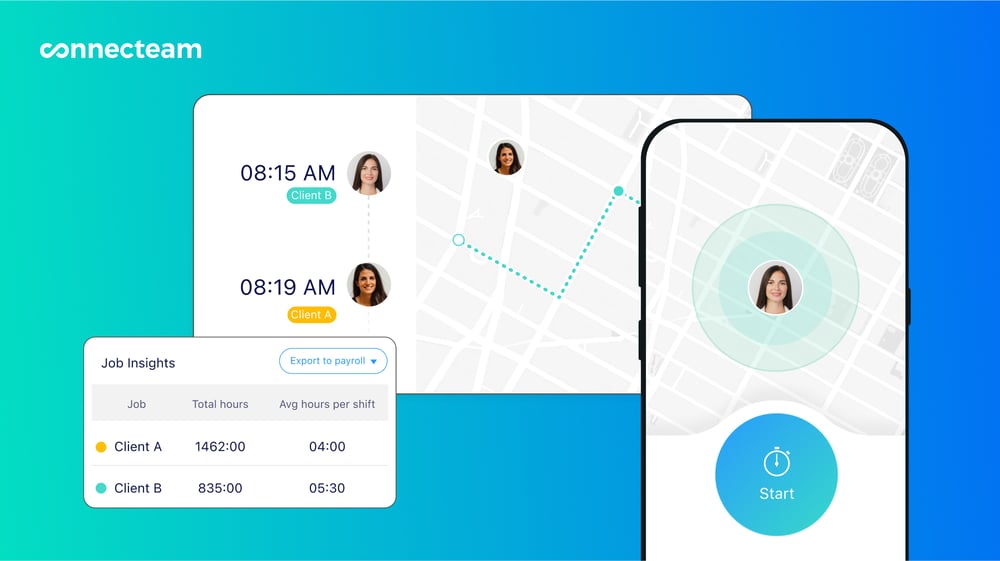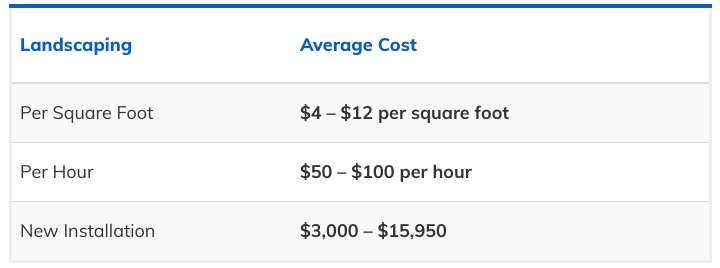As of June 2020, the landscaping industry is a $102 billion industry and is expected to grow even more, around 3.8% to be exact.
However, in order to capitalize on this profitable industry, you need to nail your landscaping estimate.
An estimate that’s too high keeps clients away and running to your competitors. While an estimate that’s too low ensures you’re burning through money more quickly than you’re earning it.
By understanding how to create an effective landscaping estimate, only then can you ensure you’re making money on each project. We offer the complete guide to help you accurately estimate your landscaping job from here on out.
Do Your Homework When Creating A Landscaping Estimate
Take the time to actually go to the landscaping site, this way you can fully see what the area looks like and can learn what your client wants. In fact, to create an accurate landscaping estimate, you and the client should go to the worksite together. One, the client can ask you various questions so you can answer right away without delay. Two, you can offer additional services that can benefit the client and your back pocket, like enhancing curb appeal with colorful plants. And finally, be sure to ask your client as many questions too. For example, are there any concerns you have? How much time will you spend outside? What feature is the most important to you? Do you have pets who will be enjoying the area as well?
In addition, ensure you take measurements of the length and width, along with making notes of where there is shade and sunlight so you can determine what type of plants are appropriate.
TIP: Focus on the client, genuinely focus on them, and not just the project. This helps drive your competitive edge.
Draw Up A Rough Sketch
It can help you, and the client, to visually see what you can do to the area. Draw up a rough sketch that highlights each plant and tree, seating area, additional material like rocks, and so on.
Estimate How Long The Project Will Take
It can be helpful to look back at similar projects to be able to appropriately determine how long the entire project will take. Take note of how many workers and subcontractors you used and also how many hours were needed to complete the project.
If you don’t have previous experience then it can be helpful to use a GPS time tracking system for all your workers and projects.

A time tracking solution allows you to see what your workers are doing, what project they’re working on, when they started, and how long it took them to finish the job. All of this data can be exported into one report so you can estimate the hourly rate for subcontractors and be sure to tag on 20% to factor in the payroll tax. In addition, that makes it easier to plan for future projects of the same nature so you estimate project completion more accurately. Also, with a time tracking solution that integrates automatically to a payroll software, like Connecteam does with QuickBooks Online and Gusto, you can ensure 100% accurate payroll with the click of a button.
#1 Time Tracking Solution
Easily track and manage work hours on jobs and projects, improve your payroll and timesheet process, and collaborate with your employees like never before.
Determine Material Costs
The material costs you need to estimate include anything that will be installed for the project.
For example:
- Base material
- Cement
- Fabric
- Plants and trees
- Mulch
- Softscape materials like soil, seed, sod, etc.
- Patio pavers
- Sprinkling system
- Artificial turf
- Fence material
The above list is pretty basic so there may be additional material costs you need to think of, each project is unique in its own way.
TIP: You can download this free calculator to help you price up materials.
Determine Overhead Costs
What exactly are overhead costs? These are the costs of doing business! For example:
- Vehicle expenses, like insurance and gas
- Marketing for your company
- Rent and office utilities (mobile phone, as well)
- Software subscriptions, like for a time tracking app
- Equipment repair and maintenance
- Accountant and insurance
The list above serves as a starting point so that you can ensure your landscaping jobs are profitable so that you can get ahead and pay your bills! Simply divide that final amount by how many jobs you typically complete each month to determine overhead costs.
Determine Labor Costs
Perhaps the most important part of your landscaping estimate is the amount you need to pay your workers, from the work they do to insurance and anything else associated with labor. Make sure you understand what these numbers are so you can add them to your landscaping estimate.
According to the Bureau of Labor Statistics, in 2019, the average hourly wage for landscaping workers was $15.56. The average hourly wage can be as low as $10.44 and as high as $22.37.
As mentioned before, you can use a time tracking solution to easily track and manage hours on jobs and projects, to enhance your payroll process and improve timesheet management.
Add Your Markup
To finish your landscaping estimate, add your markup. The industry standards recommend charging around 15-20% for residential jobs and 10-15% for commercial landscaping jobs.
Your margins can be increased if your work is higher quality than your competitors or if you have offer a service that isn’t easy to come by.
In addition, be sure to research what your competition is charging so you can factor that into your markup.
Example Of A Landscaping Cost Estimator
Chances are you aren’t looking for an accountant right now, you just need a basic number to sink your teeth into. To help get you started, take a look below at a basic formula to get you started on the right foot.
Material costs + labor costs + overhead = break even point
The break even point X 1.2 = your estimate
Be sure to add sales tax to the final estimate, especially if your state requires you to do so.
Typical Landscaping Costs
Each landscaping cost varies as it’s based on the size of the job and how many workers are needed to finish it.
A landscaping hourly rate includes:
- small jobs: $50 to $100 per hour
- larger jobs: $4 to $12 per square foot

The Bottom Line Your Landscaping Estimate
To get the most out of your landscaping estimate, be sure to regularly enhance your estimating process as the hardest part of your job is to understand how long a project will take. If you’re using a digital solution, like Connecteam, then you can always look at the data to make an accurate estimate thanks to detailed timesheets or genfence features.
As you constantly work on enhancing your landscaping estimate then you can be sure that high profits and happy clients are always within reach.
Listen to how a landscaping company with 200+ employees utilizes Connecteam for daily internal communication & engagement!
#1 Landscaping Software
Grow your landscaping business by setting everything on autopilot with Connecteam’s leading software solution. From scheduling to GPS time tracking, communication, detailed reports, and much more.




